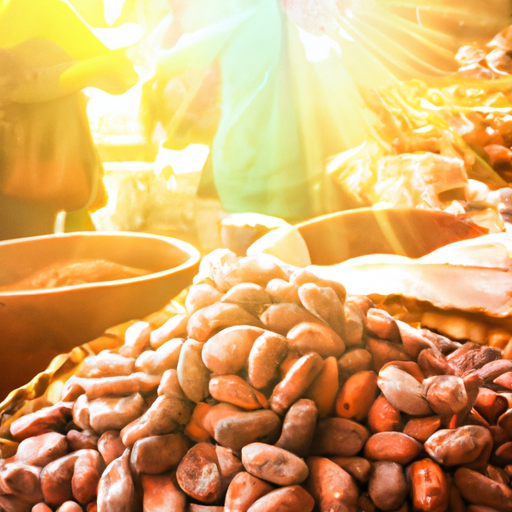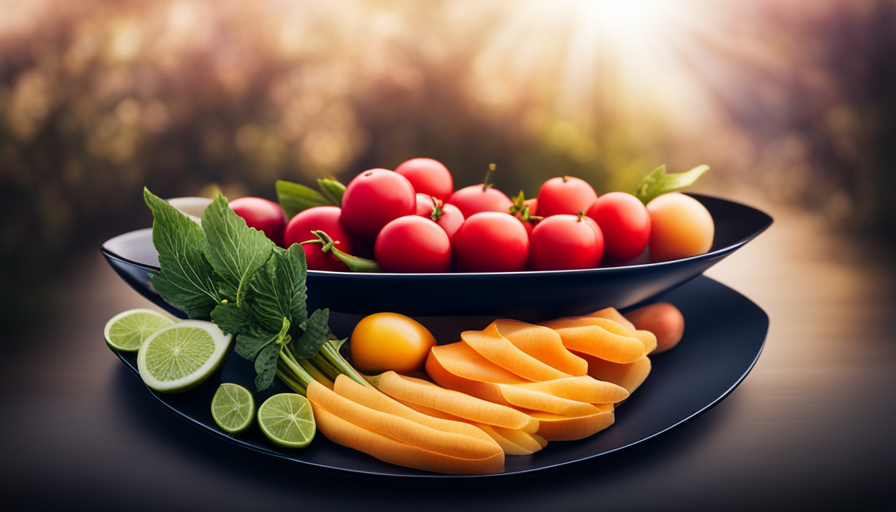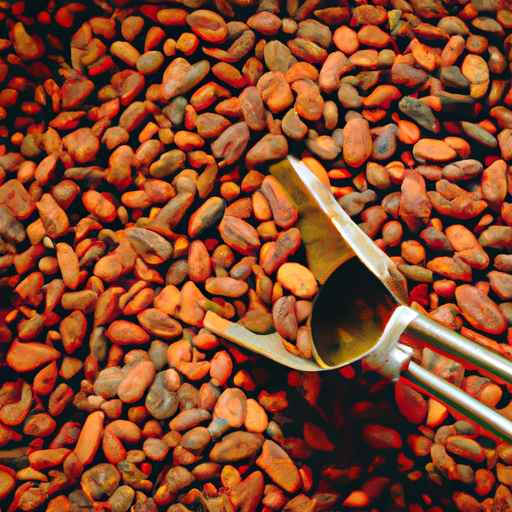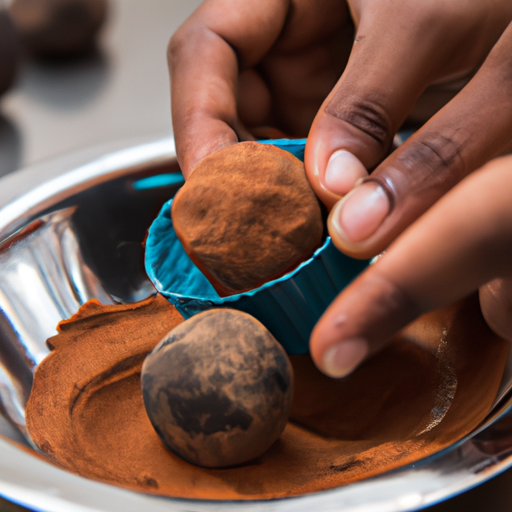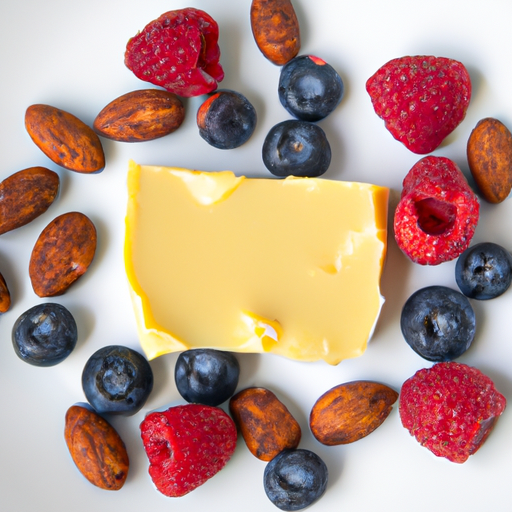Have you ever realized that raw cacao is not just tasty, but also filled with antioxidants and essential nutrients? Research has demonstrated that it actually has a higher antioxidant content than blueberries, green tea, and even red wine.
If you’re like me and love to indulge in this healthy treat, you’re probably wondering where to buy raw cacao in bulk. Well, you’re in luck! I’ve done the research and compiled a list of the best places to find this superfood in large quantities.
Whether you prefer shopping at health food stores, browsing online retailers, or even buying directly from cacao farms, there are plenty of options available. You can also check out wholesale suppliers, farmers markets, specialty food stores, co-packers and manufacturers, as well as local bakeries and restaurants.
And if you’re feeling adventurous, you can even try grinding your own cacao at home.
So, let’s dive in and discover the best sources for buying raw cacao in bulk!
Key Takeaways
- Health food stores
- Online retailers (Amazon, eBay)
- Wholesale suppliers (Alibaba, Amazon Business)
- Farmers markets
Health Food Stores
You can easily find raw cacao in bulk at health food stores near you. Health food stores are a great place to start when looking for raw cacao because they typically carry a wide variety of organic and natural products.
Raw cacao is known for its numerous health benefits, such as being rich in antioxidants, magnesium, and iron. It can boost mood, improve cardiovascular health, and even aid in weight loss.
In addition to its health benefits, raw cacao is also a versatile ingredient that can be used in a variety of recipes, such as smoothies, desserts, and baked goods.
Now, let’s explore another option for purchasing raw cacao in bulk: online retailers.
Online Retailers
When it comes to buying raw cacao in bulk, online retailers offer a wide variety of options from different brands.
I like to explore different websites and read reviews to compare prices and quality.
It’s also worth keeping an eye out for deals and promotions, as online retailers often have special discounts that can save you money.
Explore a range of options from different brands
To explore a range of options from different brands, consider the following popular brands:
-
Navitas Organics: Known for their high-quality and organic raw cacao products, Navitas Organics offers bulk options packed with antioxidants and essential minerals.
-
Terrasoul Superfoods: Terrasoul Superfoods provides ethically sourced raw cacao in bulk, ensuring the highest quality and preserving the health benefits.
-
Healthworks: With a focus on sustainability, Healthworks offers bulk raw cacao that is rich in antioxidants and can be used in various recipes, from smoothies to baked goods.
-
Anthony’s: Anthony’s offers bulk raw cacao powder that is non-GMO and gluten-free, making it a great option for those with dietary restrictions.
To make an informed decision, read reviews and compare prices to find the best bulk raw cacao option for you.
Read reviews and compare prices
To get a taste of what others think and to find the best deal, take a peek at the reviews and price tags of different options.
Reading reviews can provide valuable insights into the quality and taste of the raw cacao you are considering. Look for reviews that mention the flavor profile, texture, and overall satisfaction of the product. Additionally, be sure to read product labels to compare the nutritional benefits of each brand. Pay attention to the percentage of cacao, any added ingredients, and certifications like organic or fair trade. This information will help you make an informed decision based on your preferences and dietary needs.
Once you have narrowed down your options, it’s time to look for deals and promotions that can save you money on your bulk purchase.
Look for deals and promotions
Scouring for discounts and special offers can help you snag a sweet bargain on your purchase. When looking for deals and promotions on raw cacao in bulk, be sure to compare prices from different retailers. Here are some tips to help you find the best sales:
- Check online marketplaces like Amazon or eBay for discounted prices.
- Sign up for newsletters or join loyalty programs of cacao retailers to receive exclusive promotions.
- Follow social media accounts of cacao brands to stay updated on any flash sales or limited-time offers.
- Visit local health food stores or specialty shops that often have sales on bulk items.
- Keep an eye out for seasonal sales, such as during holidays or special events.
By looking for sales and comparing prices, you can find the best deals on raw cacao.
Now, let’s explore the next section about wholesale suppliers.
Wholesale Suppliers
Looking to get your hands on some bulk raw cacao? Well, have you checked out wholesale suppliers? These are great options for finding large quantities of raw cacao at competitive prices.
Wholesale marketplaces, such as Alibaba and Amazon Business, provide a wide range of options from different suppliers, allowing you to compare prices and choose the best deal. Additionally, you can also consider buying directly from importers. This cuts out the middleman and can result in even lower prices. Many importers have websites or physical locations where you can place an order or visit to see the product firsthand.
Exploring wholesale suppliers and direct importers is a smart move if you want to save money and buy raw cacao in bulk. Once you’ve considered these options, let’s move on to the next section about farmers markets, where you can find unique and local cacao products.
Farmers Markets
When it comes to finding fresh and high-quality raw cacao, farmers markets are an excellent option.
Not only do they support local farmers and artisans, but they also provide an opportunity to get to know the sellers and ask about bulk options.
At farmers markets, you can find a variety of cacao products, such as whole beans, nibs, and powder, ensuring you can choose the best option for your needs.
Support local farmers and artisans
Why not try checking out your local farmers’ markets or specialty food stores for a chance to support talented artisans and farmers while getting your hands on bulk raw cacao? By supporting local economies, you can contribute to the growth and development of your community.
Buying from local farmers and artisans also promotes sustainable farming practices, ensuring the preservation of our environment for future generations. When you purchase bulk raw cacao from these sources, you can be confident in the quality and freshness of the product.
Additionally, you have the opportunity to interact directly with the people who grow and produce the cacao, gaining insight into their craft and passion. So, why not support your local farmers and artisans by purchasing your raw cacao from them?
This way, you can find fresh and high-quality raw cacao while making a positive impact on your community.
Find fresh and high-quality raw cacao
If you want to experience the epitome of luxurious and indulgent chocolate, nothing compares to the absolute freshness and supreme quality of locally sourced raw cacao. Finding reliable sources for this exquisite ingredient is key to elevating your culinary creations.
Look for trusted suppliers who prioritize sourcing from small-scale farmers and artisans. These individuals often have a deep understanding and respect for the cacao bean, resulting in a superior product.
When purchasing raw cacao in bulk, it’s important to consider proper storage techniques. Keep it in an airtight container in a cool, dark place to preserve its flavor and aroma. Avoid exposing it to direct sunlight or moisture, as this can lead to spoilage.
By taking these steps, you can ensure that your raw cacao remains fresh and of the highest quality. To learn more about where to buy raw cacao in bulk, get to know the sellers and ask about their bulk options.
Get to know the sellers and ask about bulk options
Discover the variety of sellers out there and don’t hesitate to inquire about their options for purchasing in larger quantities. Understanding the sellers and their sourcing process is crucial when buying raw cacao in bulk. To help you with your search, I have compiled a table that showcases three different sellers and their offerings:
| Seller Name | Sourcing Process | Bulk Options |
|---|---|---|
| Seller A | Organic and fair trade cacao beans sourced directly from farmers | 10-pound bags available at a discounted price |
| Seller B | Locally sourced cacao beans from small farms | Customizable bulk orders based on your needs |
| Seller C | Directly imported cacao beans from South America | 25-pound bags for wholesale buyers |
Buying raw cacao in bulk offers several benefits. Firstly, it can save you money compared to buying smaller quantities. Secondly, it ensures a steady supply for your needs. When storing raw cacao, make sure to keep it in a cool, dry place to maintain freshness. As for usage, raw cacao can be used in various recipes like smoothies, desserts, and even savory dishes. With this knowledge about the sellers and the benefits of bulk buying, let’s now explore the next step at specialty food stores.
Specialty Food Stores
When it comes to finding unique and gourmet raw cacao products, specialty food stores are the place to go. These stores offer a wide variety of specialty blends and flavors that you won’t find in your average grocery store.
And if you’re looking to buy in bulk or get special discounts, don’t hesitate to ask – many specialty food stores are more than happy to accommodate your needs.
Discover unique and gourmet raw cacao products
Hidden within the depths of the internet lies a treasure trove of unique and gourmet raw cacao products just waiting to be savored. These online retailers offer a wide variety of options that will satisfy even the most discerning chocolate connoisseur. From single-origin cacao beans to artisanal chocolate bars, there is something for everyone.
To help you navigate through the vast selection, here is a handy table showcasing some of the best online stores for gourmet raw cacao products:
| Online Retailer | Description |
|---|---|
| Bean-to-Bar | Offers a range of gourmet cacao products sourced from small-batch farmers. |
| Artisan Chocolate Co. | Specializes in handcrafted chocolate bars made from high-quality raw cacao. |
| Cacao Nibs Unlimited | Provides a selection of premium cacao nibs perfect for gourmet recipes. |
Indulging in these unique and gourmet raw cacao products not only satisfies your taste buds but also offers numerous health benefits. Raw cacao is packed with antioxidants, minerals, and mood-enhancing compounds that can boost your overall well-being.
Now, let’s explore where to find specialty blends and flavors to further elevate your raw cacao experience.
Find specialty blends and flavors
Ready to take your raw cacao experience to the next level? Well, you’re in luck because there are specialty blends and flavors out there waiting to be explored! Here are some unique ways to enhance your raw cacao journey:
-
Infused Flavors: Discover specialty flavorings like mint, lavender, or orange that add a delightful twist to your cacao creations.
-
Exotic Blends: Explore blends that combine raw cacao with other superfoods like maca, goji berries, or matcha for a truly unique and nutritious experience.
-
Spiced Varieties: Spice up your raw cacao with blends that include cinnamon, chili, or cardamom, adding warmth and depth to your drinks or desserts.
-
Nutty Combinations: Indulge in raw cacao paired with nuts like almonds, hazelnuts, or cashews, creating a deliciously crunchy and satisfying treat.
Once you’ve found your favorite specialty blends and flavors, don’t forget to ask about bulk ordering or special discounts to make the most of your raw cacao journey.
Ask about bulk ordering or special discounts
Don’t miss out on the opportunity to maximize your cacao experience. Inquire about the benefits of ordering in larger quantities or any special deals available. When purchasing raw cacao in bulk, ask about minimum order requirements. Some suppliers may have a minimum quantity that needs to be purchased to qualify for bulk pricing. By meeting these requirements, you can take advantage of lower prices and save money in the long run.
Additionally, don’t hesitate to negotiate pricing with the supplier. They might be willing to offer discounts or special deals for larger orders. By asking about bulk ordering and special discounts, you can ensure that you’re getting the best value for your money.
Moving on to the next section about buying direct from cacao farms, let’s explore another way to source high-quality raw cacao.
Direct from Cacao Farms
To find the freshest raw cacao in bulk, you can head directly to cacao farms. Here, you’ll be surrounded by rows of lush cocoa trees, their ripe pods bursting with rich, chocolatey goodness.
By sourcing directly from cacao farms, you are supporting the direct trade model and ensuring sustainable sourcing practices. This means that you can have peace of mind knowing that the farmers are being paid fair prices for their hard work and that the cacao is ethically sourced.
Additionally, buying directly from cacao farms allows you to establish a direct relationship with the farmers. This gives you the opportunity to learn more about their cultivation processes and the journey of the cacao from tree to bean.
This deeper connection with the source of your raw cacao sets the foundation for the subsequent section about co-packers and manufacturers who transform the cacao into various products.
Co-Packers and Manufacturers
When you’re craving a decadent chocolate treat, there’s nothing more satisfying than indulging in the delectable creations made by co-packers and manufacturers.
These companies specialize in producing high-quality chocolate products using raw cacao in bulk. They have co-packer partnerships with various cacao farms, ensuring a steady supply of top-notch ingredients.
Additionally, co-packers offer private label options, allowing businesses to brand their own chocolate products without the hassle of production.
You can find a wide range of chocolate goodies from co-packers and manufacturers, including chocolate bars, truffles, and even hot cocoa mixes. These companies take pride in their craftsmanship and attention to detail, resulting in delicious treats that will satisfy any chocolate lover’s cravings.
Moving on to local bakeries and restaurants, they also play a significant role in providing unique and mouth-watering chocolate creations.
Local Bakeries and Restaurants
When exploring the option of buying raw cacao in bulk, it’s worth reaching out to local bakeries and restaurants. You can inquire if they sell raw cacao in bulk and ask about their suppliers and pricing.
Additionally, considering the possibility of partnering with them for joint purchases could be a mutually beneficial arrangement.
Inquire if they sell raw cacao in bulk
Sure thing! You’ll be delighted to know that they do sell raw cacao in bulk. If you are a conscious consumer, you should inquire about their organic certifications to ensure that the cacao is free from pesticides and other harmful chemicals. Additionally, it’s always a good idea to check for fair trade options, which ensure that the cacao farmers are receiving fair wages and working in safe conditions.
When you visit the local bakeries and restaurants, keep an eye out for these sub-lists:
- Organic Certifications
- USDA Organic
- Fairtrade Certified
By asking about their suppliers and pricing, you can gather more information about the source of the cacao and make an informed decision.
Now, let’s move on to the next section about asking about their suppliers and pricing.
Ask about their suppliers and pricing
To gather more information about the source of their ingredients and make an informed decision, you may want to ask about who their suppliers are and how they determine their pricing.
When inquiring about sourcing, it is essential to understand where the raw cacao comes from, whether it is ethically sourced, and if it meets any specific quality standards.
Additionally, comparing pricing among different suppliers will help you find the best deal for your bulk purchase.
By asking these questions, you will gain valuable insights into the company’s commitment to sustainability and quality.
Understanding their sourcing practices and pricing structure will enable you to make an informed choice when it comes to purchasing raw cacao in bulk.
Consider partnering with them for joint purchases to further maximize your savings and ensure a steady supply of high-quality raw cacao.
Consider partnering with them for joint purchases
Consider teaming up with them for combined purchases to maximize your savings and ensure a consistent supply of top-notch ingredients.
Partnering with competitors for joint purchasing strategies can be a smart move in the world of bulk buying. By pooling resources and buying power, you can negotiate better deals and discounts. This collaboration also allows you to share shipping costs, reducing expenses even further.
Additionally, partnering with other businesses can help you build relationships within the industry and gain access to a wider range of suppliers.
Once you have established a successful partnership, you can transition into the next step of your raw cacao journey: DIY home grinding.
DIY Home Grinding
Wow, if you’re looking to transform your kitchen into a chocolate lover’s paradise, there’s nothing quite like the satisfaction of DIY home grinding to unleash the full potential of raw cacao!
DIY home grinding is a fantastic way to experience the benefits of grinding cacao at home. Not only does it allow you to have complete control over the grinding process, but it also ensures that you are getting the freshest and most flavorful cacao possible.
When you grind cacao at home, you can adjust the coarseness to your liking, whether you prefer a fine powder for baking or a slightly chunkier texture for hot chocolate.
Additionally, grinding cacao at home preserves its nutritional value, as the heat generated during commercial grinding can sometimes degrade its beneficial properties.
So, grab your grinder and get ready to embark on a delicious and rewarding chocolate-making journey right in your own kitchen!
Frequently Asked Questions
Can I use regular cocoa powder as a substitute for raw cacao in recipes?
Yes, you can use regular cocoa powder as a substitute for raw cacao in recipes. However, raw cacao has more health benefits than cocoa powder, such as higher antioxidant content and more nutrients.
Are there any potential health risks associated with consuming raw cacao?
There are potential health benefits of consuming raw cacao, such as antioxidants and minerals. To incorporate it into a healthy diet, add it to smoothies, oatmeal, or use it in baking.
What is the difference between raw cacao and regular cocoa powder?
Raw cacao and regular cocoa powder differ in their production methods. Raw cacao is minimally processed, preserving more nutrients and antioxidants. Using raw cacao in recipes enhances flavor and provides potential health benefits.
Can I purchase raw cacao in smaller quantities, or is it only available in bulk?
Raw cacao is available in smaller quantities, not just in bulk. Its availability varies depending on the store or online retailer. You can find raw cacao in various sizes, allowing you to purchase the amount that suits your needs.
Can I find organic or fair-trade raw cacao options at any of these sources?
You can find organic and fair-trade raw cacao options at various sources. Look for them in specialty grocery stores, health food stores, online retailers, and farmers markets.
Where Can I Find Places to Buy Raw Cacao in Bulk?
If you’re looking to buy raw cacao online in bulk, there are several reputable websites that offer this product. You can find places to buy raw cacao online from specialty health food stores, organic retailers, and direct from cacao farmers. Just search for “buy raw cacao online” to find reliable sources.
Conclusion
So there you have it, folks! After exploring various options, I’ve found that there are plenty of places where you can buy raw cacao in bulk. Whether you prefer to visit health food stores, browse online retailers, or connect with wholesale suppliers, the choice is yours.
Farmers markets, specialty food stores, and even cacao farms themselves offer unique opportunities to purchase this delicious ingredient. You can also consider co-packers, manufacturers, local bakeries, and restaurants for your raw cacao needs.
And if you’re feeling adventurous, why not try grinding your own cacao at home? The possibilities are endless!
Happy cacao hunting!

